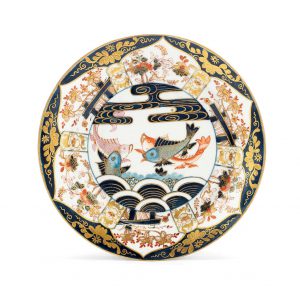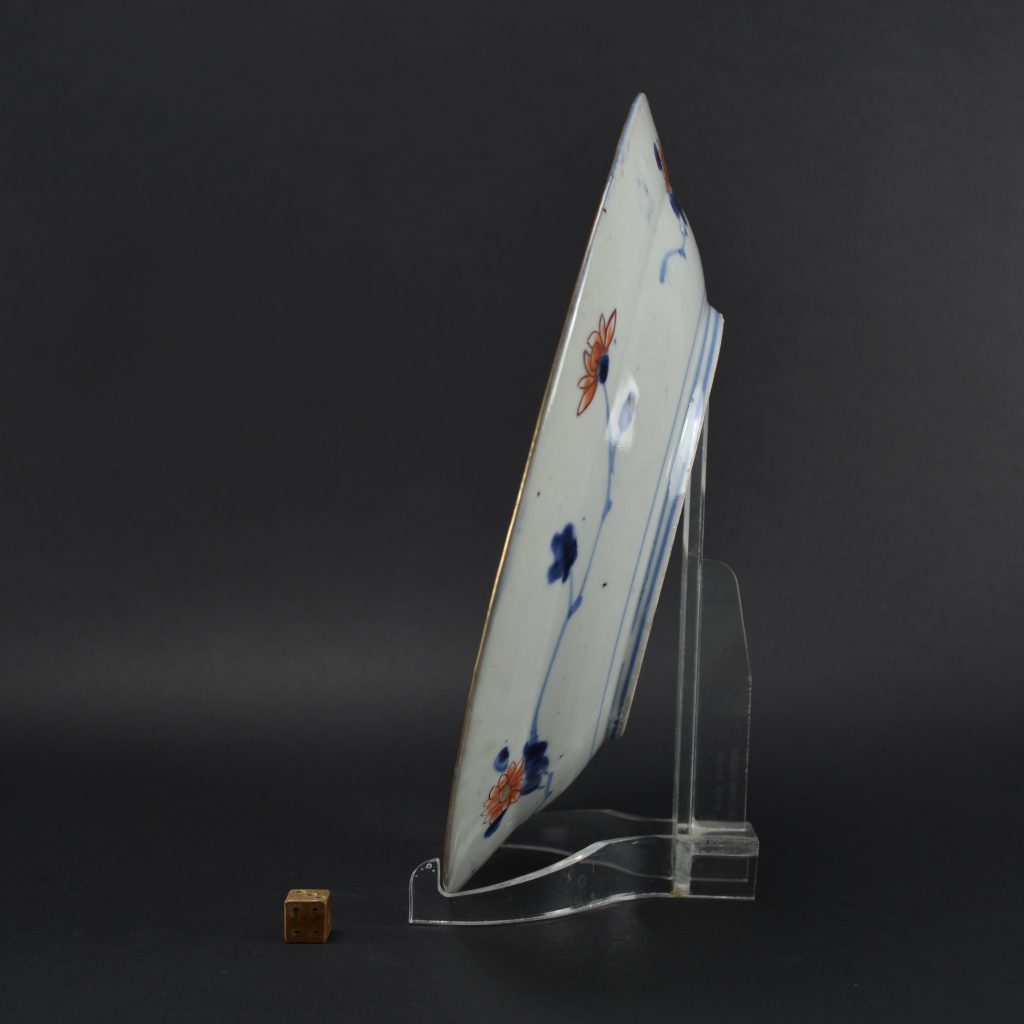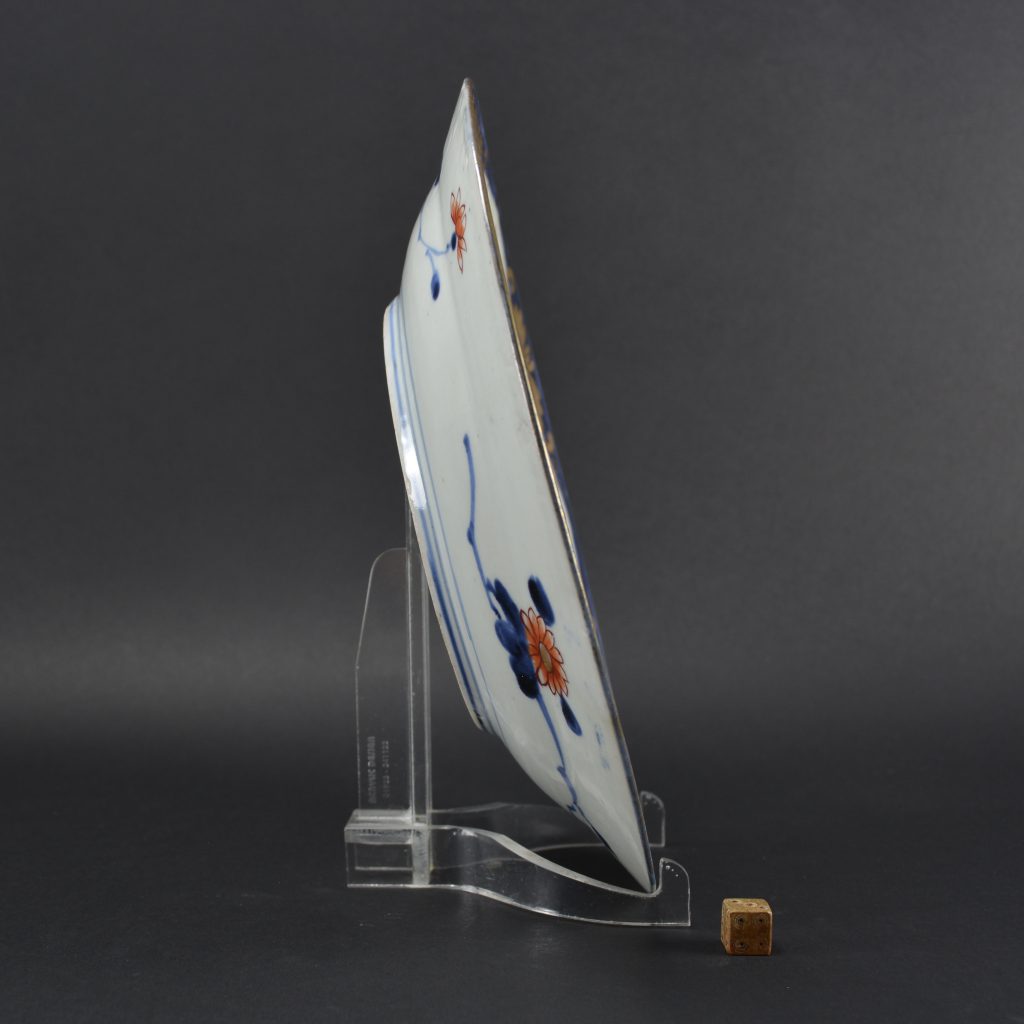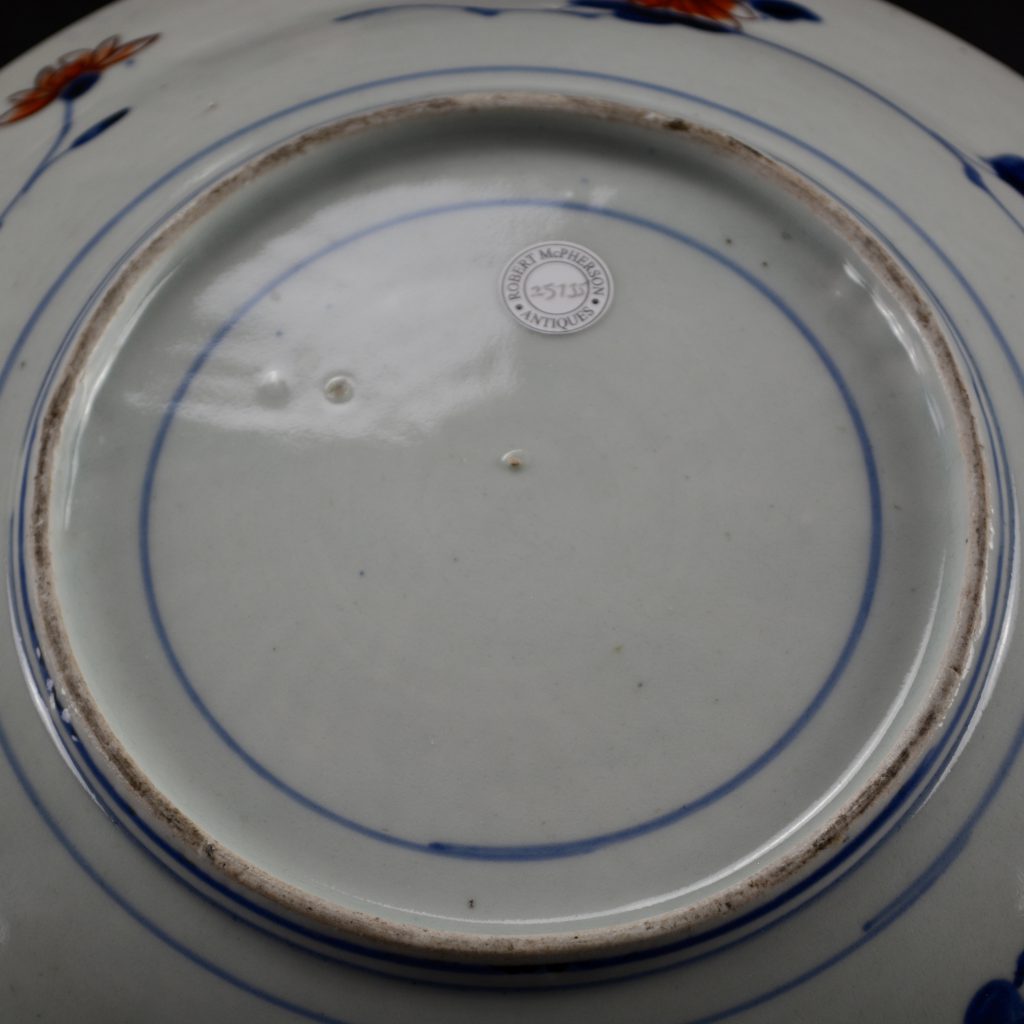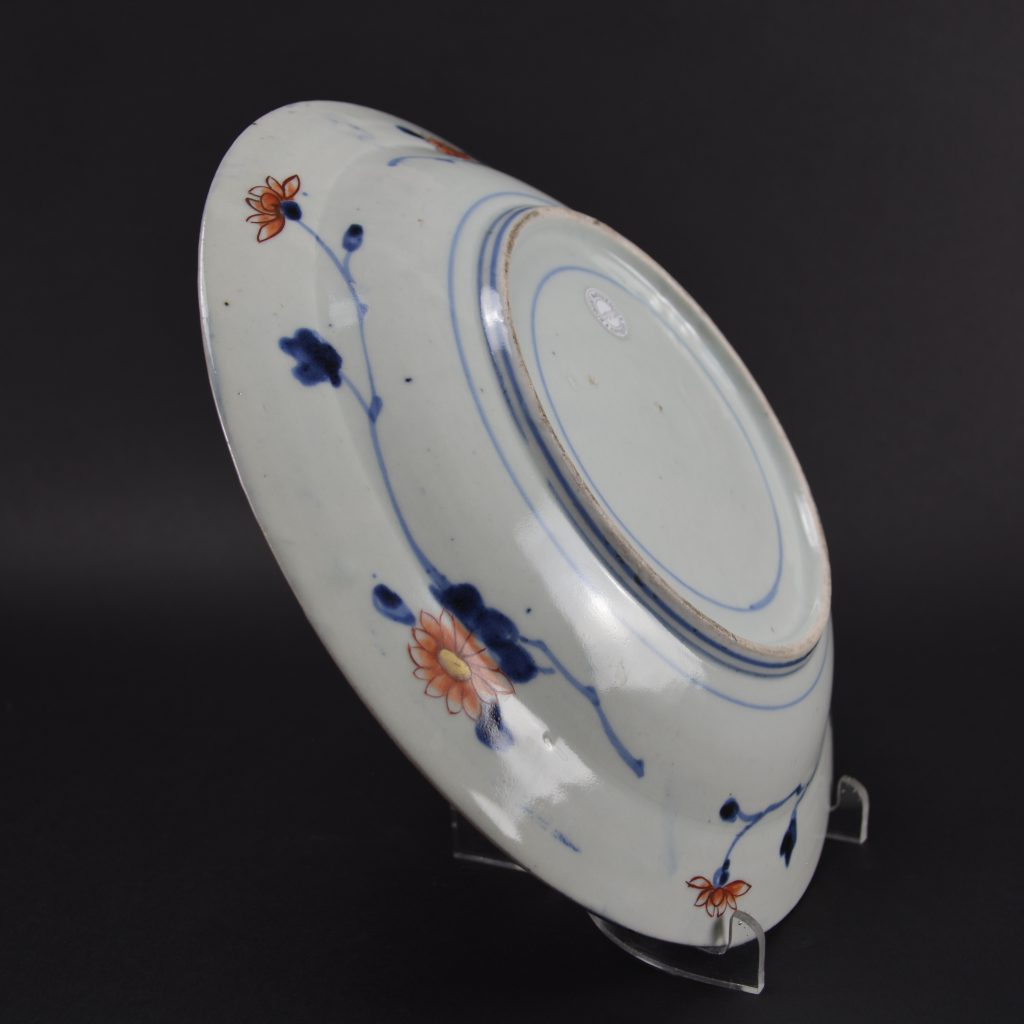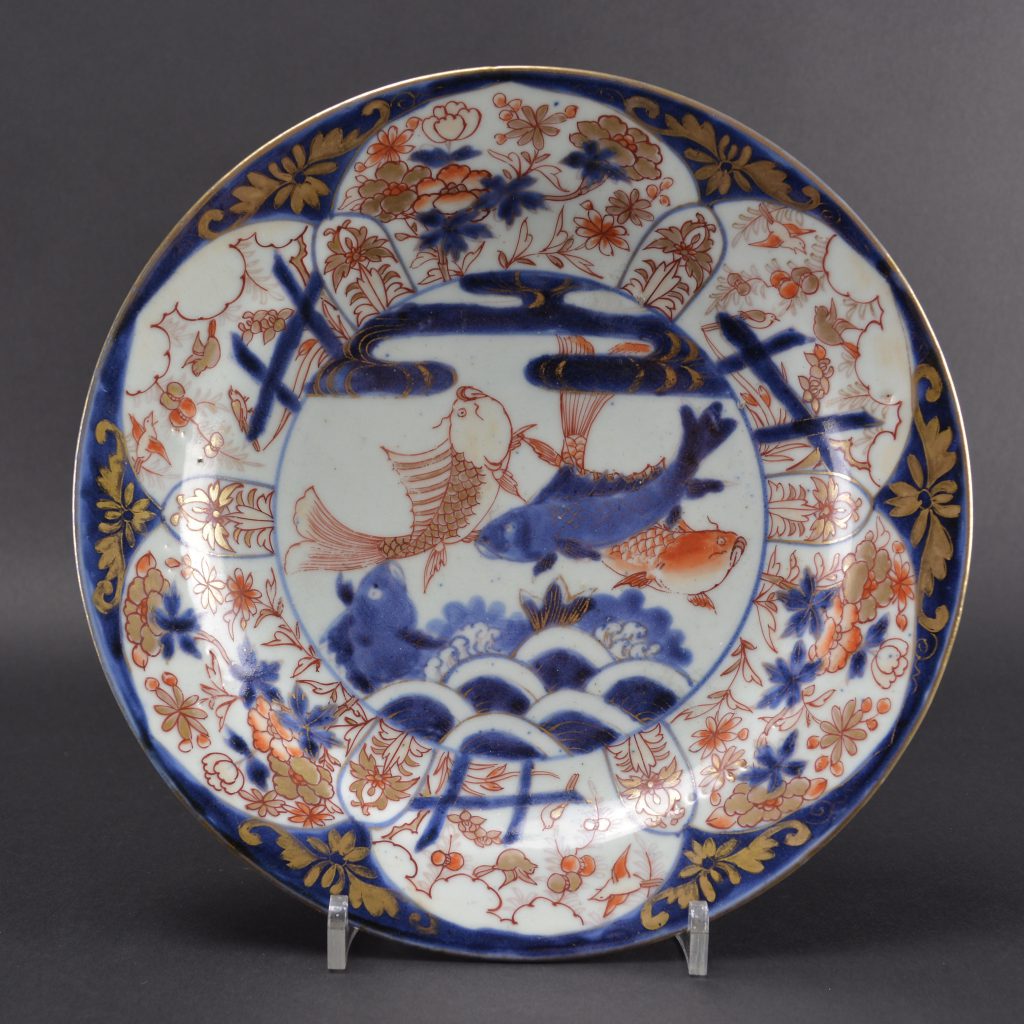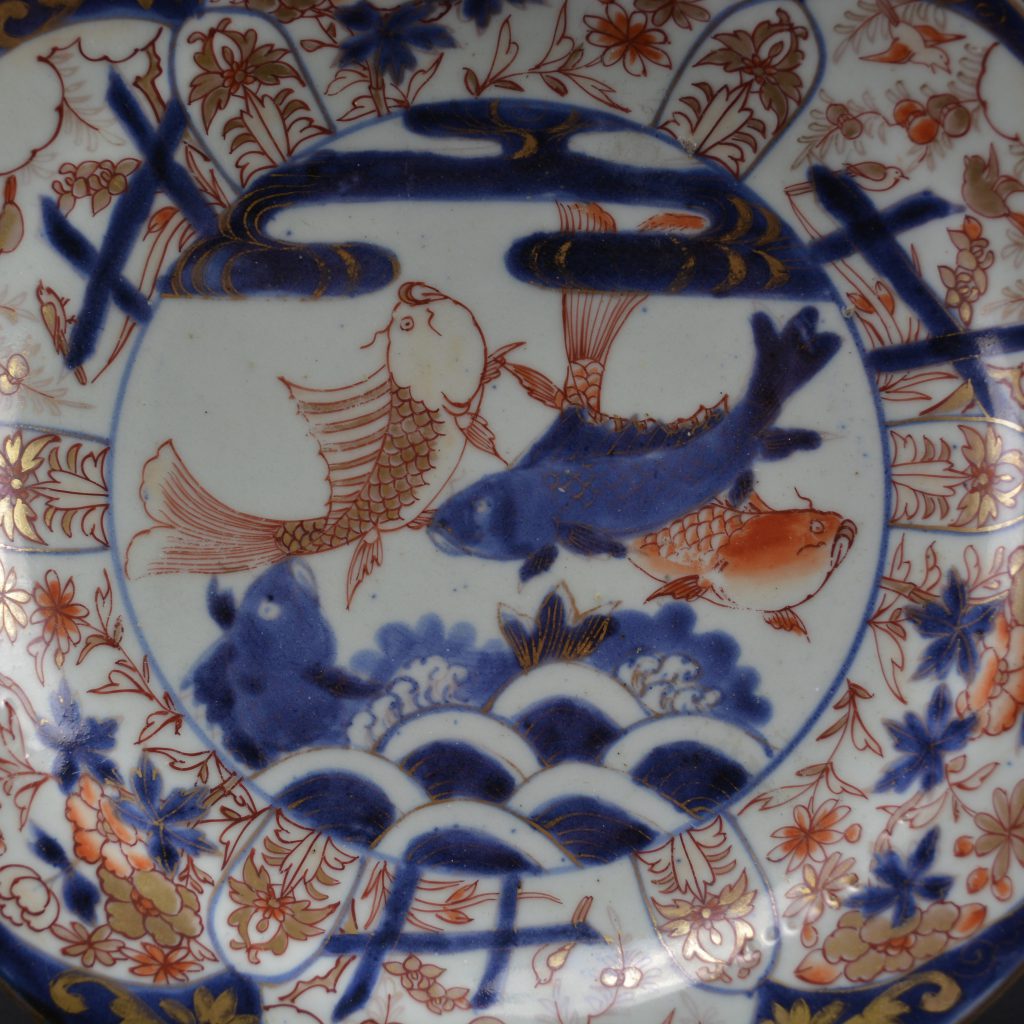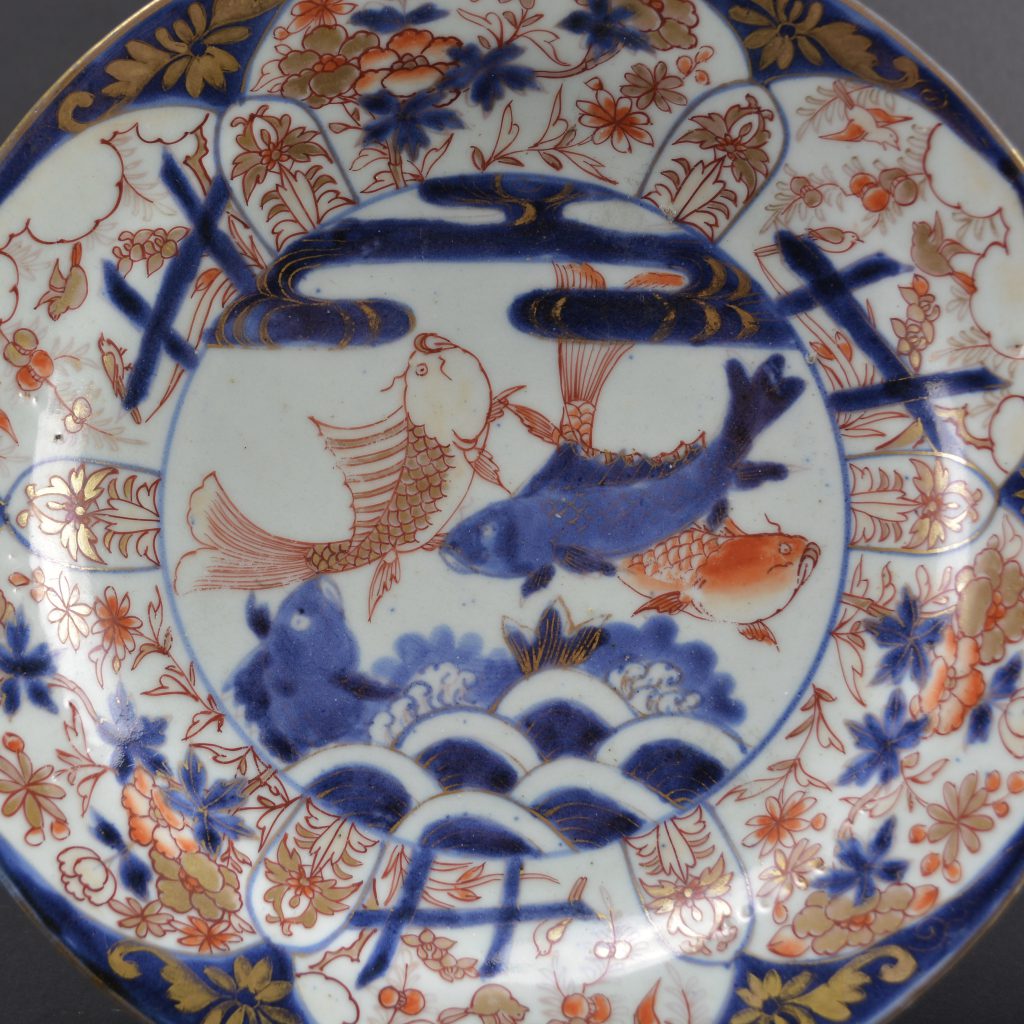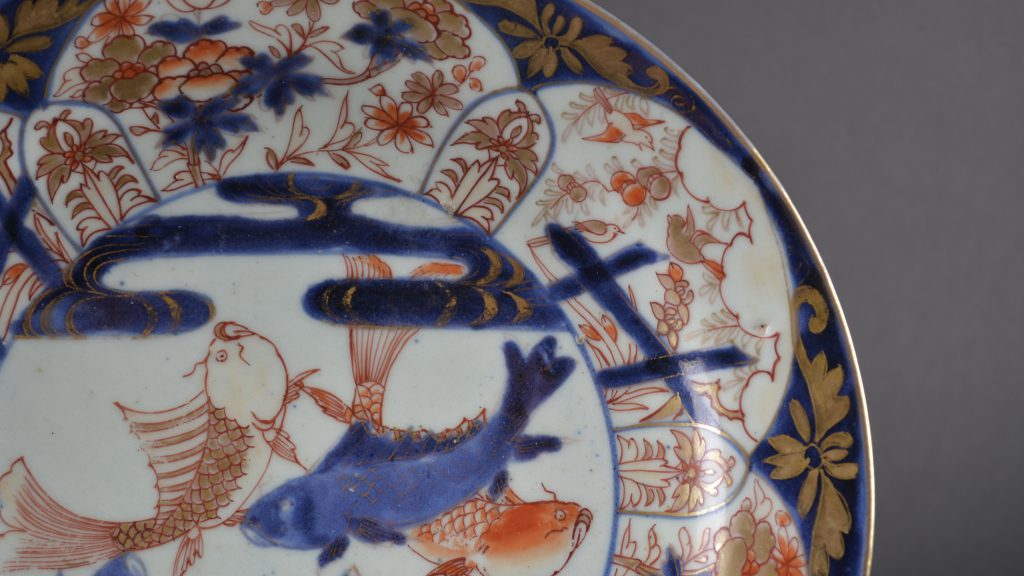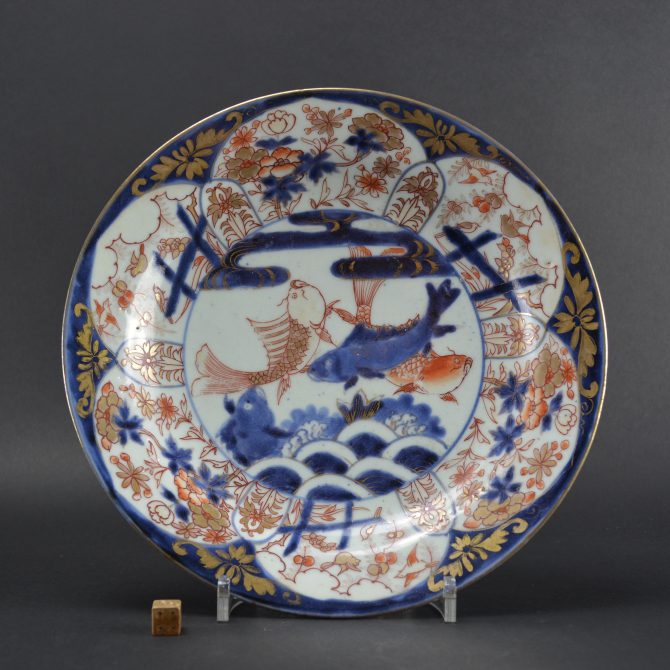
An 18th Century Japanese Imari Porcelain Plate
A Large 18th Century Japanese Imari Plate, Arita Kilns c.1700 – 1730. This thickly potted Japanese porcelain plate is painted in the Imari palette with four leaping carp, three are above the rough waves and another is just emerging out of the water. The petal-shaped panels from scenes of birds, fruit and flowering plants within a garden context.
SOLD
- Condition
- In excellent condition, minor wear to the gilding.
- Size
- Diameter 25.7 cm (10 inches)
- Provenance
- N/A
- Stock number
- 25735
Information
Provenance
T Grant Dixon Collection
A very similar example was in the Barbara Leake Collection sold by Bonhams, 12 March 2008, lot 233. See Klaber and Klaber, Oriental Influences on European Porcelain, April 1978, fig. 6a together with a Japanese prototype from the Frank Lloyd Collection. Another Worcester plate with an outside-decorated version of the same pattern was in the Zorensky Collection, part 3, lot 222.
https://www.bonhams.com/auctions/24871/lot/378/
